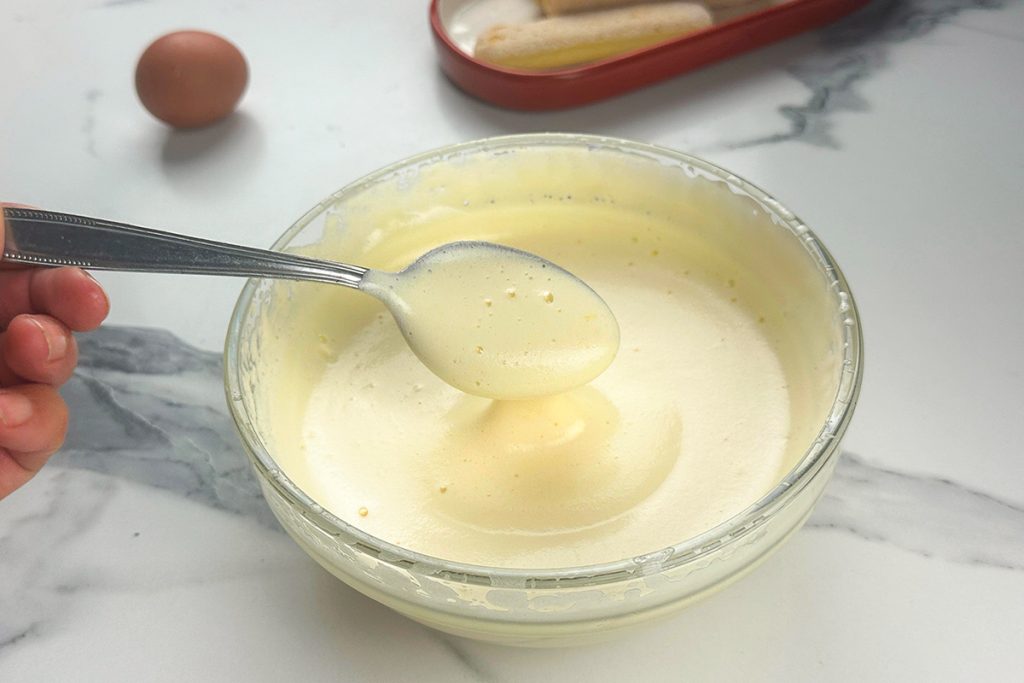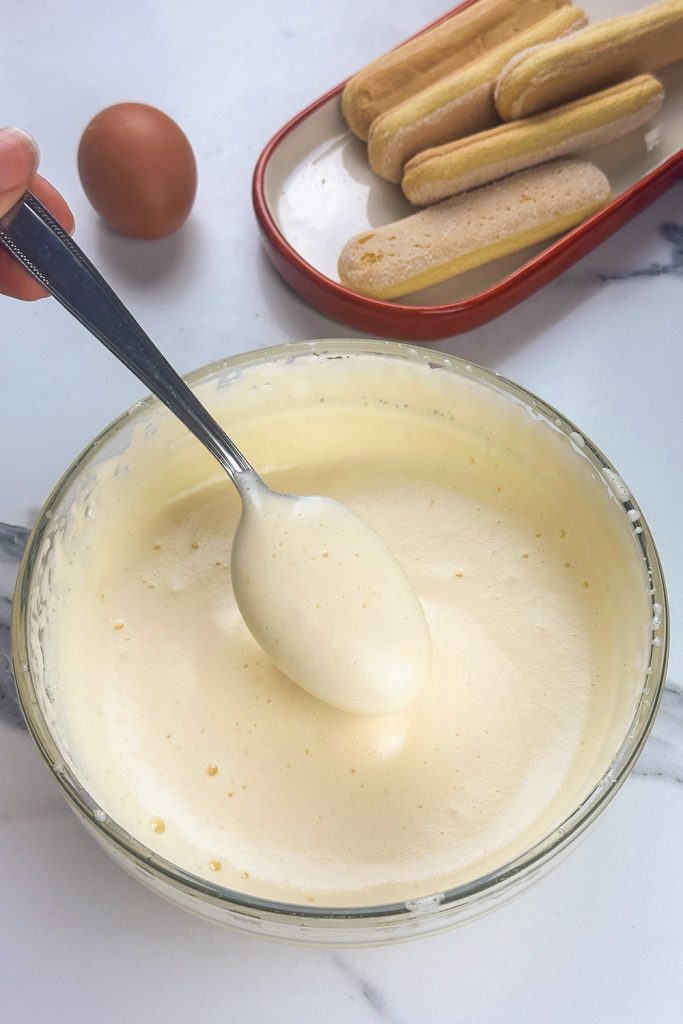The pate a bombe, or pâte à bombe, is one of the many pastry bases. It’s an egg cream with sugar, used to prepare many cold desserts without baking, but safely with pasteurized eggs, like the classic and famous tiramisu. It is also known as the pasteurized tiramisu base. Generally, it is suggested to prepare a sugar syrup and bring it to 250°F, to be added to the eggs while beating. I tried this classic method, but I wasn’t satisfied with the result because I couldn’t bring the eggs to a temperature between 140°F and 149°F as required for safe pasteurization, so I used an alternative and very simple method that guaranteed 100% pasteurized eggs by beating the eggs with sugar over 140°F for at least 6 minutes to ensure they were indeed pasteurized and safe, without the risk of salmonella or other bacteria. It’s possible to continue longer, but never go over 158°F, to avoid cooking the eggs. Let’s see how to prepare it. The quantities vary depending on how much we need to prepare; I provide a measure for 2 eggs. If we need to make a batch with 4 eggs, we double the sugar as well, and so on; the process remains the same. You can also pasteurize them without sugar, but with sugar, we get a nice whipped compound suitable for making our cold and creamy desserts.

- Difficulty: Very Easy
- Cost: Very Cheap
- Preparation time: 10 Minutes
- Portions: 4
- Cooking methods: Double Boiler
- Cuisine: Italian
- Seasonality: All Seasons
Ingredients for pate a bombe enough for 250g of mascarpone
- 2 eggs
- 2.5 oz sugar
- 1 oz water (optional)
Tools for preparing the pate a bombe
- 1 Electric Whisk
- 1 Bowl
- 1 Small Pot
- 1 Thermometer
Steps for preparing pate a bombe

In a bowl, begin to whisk the eggs with an electric beater.
In a small pot, I combined water and sugar and brought it to 250°F. I added the syrup to the eggs and continued whisking. Using a thermometer, I realized the temperature wasn’t at 140°F; maybe using 6 eggs and 7 oz of sugar with a larger syrup, I might have reached it, but for a shorter time, which didn’t give me the security I was looking for.
So, to ensure my eggs were pasteurized, even in small quantities, because I can’t use 7 oz of sugar for 2 eggs, I decided to pasteurize them using a double boiler.
Just place a pot with water on the stove and bring it to a gentle simmer. Place the bowl with the eggs in the pot and whisk until it reaches a temperature between 140°F and 149°F. Be careful not to go beyond, lowering the stove flame as needed.
For complete pasteurization, keep it on the heat for at least 6 minutes or more, always above 140°F, adjusting the water temperature in the pot without letting it boil excessively, but bringing it to a gentle simmer. If necessary, you can turn off the heat for a moment. To measure the egg temperature, use a kitchen thermometer, which is truly essential.
Of course, knowing I want to pasteurize using a double boiler, I can avoid preparing the syrup and add the sugar directly to the beaten eggs.
As I mentioned, you can beat the eggs without sugar, but since this base is usually used to make uncooked cold desserts, we can add sugar without any problems.
This quantity is perfect for preparing a mascarpone cream with 250g of mascarpone, resulting in a nice creamy texture. If you want it softer, you can also add some whipped cream at the end, already sweetened, or fresh unsweetened, maybe adding an extra tablespoon of sugar. For a cream with 500g of mascarpone, just double the base quantity.
Pasteurized eggs keep longer than unpasteurized ones, so all the desserts made with this cream can be stored for an extra day, depending also on the perishability of other ingredients. The cream can also be frozen, as can all desserts made with it.

